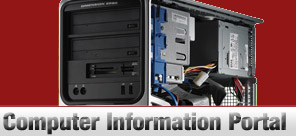

|
|
|
||||
 |
|
 |
|||
|
It is possible with this system to run a program from the start menu search box as an administrator. Using pretty much the same method as the "Run" command box in Windows XP, programs can be started in this way. Staring programs in this way as an administrator, allows for some control over the way the program behaves at the start. The administrator simply types in a command code such as CMD for the command prompt, and then presses Ctrl-Shift-Enter key combination. Here are a few methods you can use to elevate an application running with Administrator privileges. Now remember, some of these are not the easiest or most convenient ways to do things. They are only a few of the many options available.
Disabling The Vista UAC Function One method is to launch the "Local Security Policy" add-in and choose from two options. Start by clicking the "Start" button and typing secpol.msc in the search dialog box. Another method is to display Vista's admin tools by right clicking the taskbar and selecting "Properties". Click "Start Menu", "Customize", "Advanced" and then scroll down to "System Administration Tools" and open the "Display" tab. Open the "Security Options" folder and locate the settings that begin with "User Account Control". Click on "Elevate without Prompting" and this should tell the UAC that your system has permission from the Administrator to allow the programs to run. After restarting your computer, try to open a task that normally requires UAC prompt, such as changing the computer display name. Press Windows Key and Pause/Break, then select "Change Settings" icon. This should complete the UAC prompt situation as the continue box should not appear now. For Vista computer systems not joined to a domain (in other words home computer systems), There is a menu in the control panel which allows you to simply turn UAC prompt off. As with the computer network domain systems, turning off the UAC may open your system to security problems. The choice with this, as with any sort of computer system question, is totally up to you now. If you seriously want to turn off UAC prompting on your computer, go to "Control Panel" and then "User Accounts". There you will find a choice "User Account, on or off". Now you can uncheck the box that says, "Use User Account Control (UAC) to help protect your computer". That is it, straightforward. The UAC is now disabled for your computer system. Going back and reversing the steps can renew the UAC prompt and the security protection assurance. Do not forget, having to click "continue" when opening administrator controlled programs may be annoying, but the UAC is there for a reason. The UAC prompt protects your computer system from programs that may try to tamper with system files within your computer, without your approval or knowledge. UAC allows the user to be in total control of every aspect of their computer system or network. Without UAC activated, your system may allow unauthorized programs to run that may completely disrupt your computer or network system. The protection of UAC, though sometimes frustrating and overwhelming, can mean the difference between a safe and secure system and one that is out of control. Having to click the silly little "Continue" box of the UAC prompt is a small price to pay for peace of mind and a secure system. |
|
|||||||||||||||||||||||||||||||||||||
| Home l Help l Privacy Policy l User Agreement l About Us l Contact Us l Link to Us |